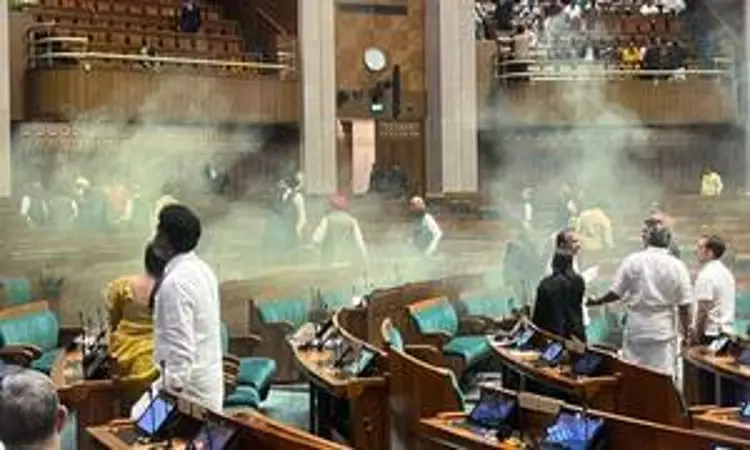Dodging a bullet
Security experts pointed out that frisking of visitors to the Parliament excludes checking footwear, something that the intruders had used to their advantage by concealing the canisters in them.

Parliament
NEW DELHI: In a serious breach of security in the temple of India’s democracy witnessed on the 22nd anniversary of the 2001 terror attack on the Parliament, two men jumped down from the visitors’ gallery into the chamber of the Lok Sabha, and opened smoke canisters. The duo triggered panic among the members as thick yellow plumes engulfed the House. The breach occurred right after Prime Minister Modi paid tributes to the security personnel martyred in the 2001 Jaish-e-Mohammad-led attack, and it exposed chinks in the Parliament’s safety armour.
Security experts pointed out that frisking of visitors to the Parliament excludes checking footwear, something that the intruders had used to their advantage by concealing the canisters in them. It’s a modus operandi that was popularised by revolutionaries like Bhagat Singh and Cuban guerrilla leader Che Guevara. The canisters, which could be picked up over the counter at fancy shops, are often used in festival revelries.
The fact that something like a smoke can could be smuggled into the most guarded of government complexes in India exposes the vulnerability of such buildings to nefarious agents, who could have very well brought in an explosive or a hazardous material, like a nerve agent. It also paints a grim picture of the failure of agencies to stay abreast of evolving threats to national security.
Following the incident, security protocols have been revised for access to the Parliament House complex, and the entry of visitors has been suspended. Apart from bifurcating the entry points for MPs as well as members of the press and staff members, a body scanner similar to the ones used in airports and military installations will now be part of the Parliament’s security armament. There will also be a glass casing that separates the visitor’s gallery to prevent any intrusion into the main House.
The investigating agencies haven’t yet established a political motive, but it is worth recalling that Khalistani terrorist Gurpatwant Singh Pannun had recently threatened that he would engage in an assault on the Indian Parliament, on or prior to December 13. The development also comes close on the heels of nations such as Canada and the US accusing India of eliminating fringe elements (such as Khalistani separatists) on American soil.
Such attacks aren’t novel. Even nations like the UK have borne the brunt of extremists outside its Houses of Parliament — in 2017 and 2018. Five fatalities were recorded in the former incident, which was perpetrated by an Islamist sympathiser. More recently, the US Capitol attack carried out by Trump supporters in the aftermath of the declaration of the election results led to the death of a police officer in the line of duty, and subsequently, four other cops who committed suicide.
Branding the intruders in India’s Parliament as enemies of the state might seem like the easy way out. But, those apprehended here had expressed their frustration on the surge in cost of living as well as the lack of job opportunities. While the right to peaceful protest is enshrined in our Constitution, resorting to modes of agitation that weaken the foundation of our democratic infrastructure, is not the way forward. Wednesday was a wake-up call for Parliamentarians, not just on account of slipshod security, but also on account of how they barely managed to dodge a bullet.



